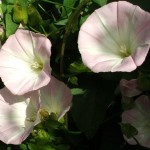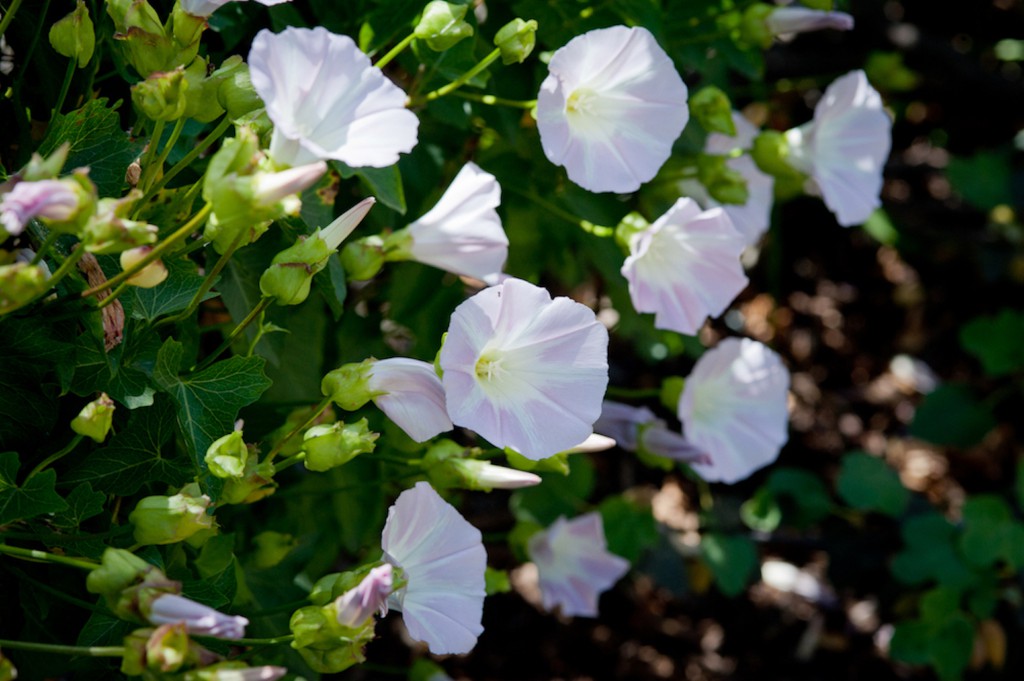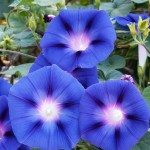Glorify Fences, Walls, and Barren Areas with the right kind of glory
If you need to glorify a rocky slope, an ugly fence or a barren area with poor soil, turn to Morning Glory! Its viney threads cling to hard surfaces and thrive with few nutrients. When going for glory, we do advise some care – some varieties may be bold, but their environmental effects are far from beautiful.
Blue Morning Glory (Ipomoea indica)
Waterfalls of deep purple-blue cascade over trees and fences this time of year. Blue morning glory can stop traffic with its bold, large blooms and magnificent color. It is prevalent enough to feel very LA, but,truth be told, this tropical invasive steals shows in many of the Southern California climate-compatible regions of the world from Australia to Portugal.
If it holds on in drought, seems to like our kind of climate, and adds color to our gardens, what could be the problem? The same vines that allow Blue Morning Glory and other non-native invasive morning glories to ensconce fences and foliage erode our slopes, choking out slope-retaining natives as they go. These invasives to our climate so well, they have no trouble jumping from our gardens into the wildlands. There, they receive less water than it does in our gardens and quickly turns to fuel for fire.
 California Morning Glory (Calystegia macrostegia)
California Morning Glory (Calystegia macrostegia)
It’s with a sad irony we note that many consider California Morning Glory, a weed. Like invasive Blue Morning Glory, California Morning Glory thrives in rocky soils and can quickly cover a cinderblock fence or retaining wall. So, if it crawls like an invasive, what makes California Morning Glory friendlier than its cousin?
California Morning Glory, aka Island False Blindweed, has a heartiness its bolder cousin lacks. Its delightfully delicate white and pale pink flowers hide hidden strength to handle heat and a lack of moisture. California Morning Glory enjoys coastal chaparral and coastal scrub climates and will bloom much of the year as a perennial. This along with its viney nature give it great skill as a slope retainer. In fact, it’s a bit of a hero, jumping right in to support slopes as one of the first fire followers to respond after a wildfire.
For a “white” flowering theme to partner with calestegia, you may invite its fire friendly neighbors white sage, Salvia apiana, and Gnaphalium californicum to join the party.
More Information
Las Pilitas Nursery, California Morning Glory
Invasive Plant Atlas of the United States

